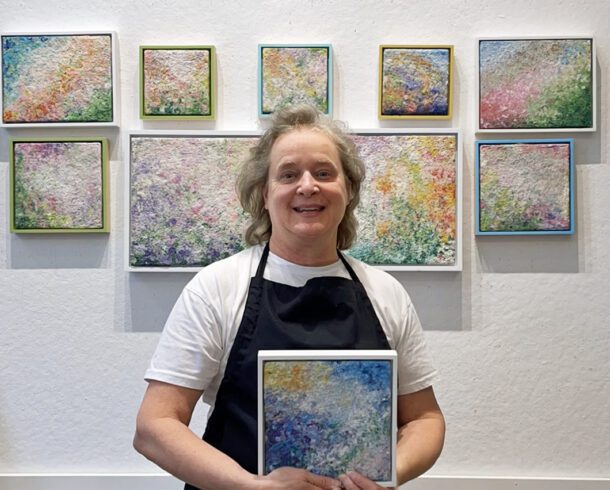Jul 3, 2009 | Pulp painting
Painting with over beaten pulp can take a while to get comfortable with. Before going into a lot of detail of how to work with over-beaten pulp, let’s answer the important question of “What is over-beaten pulp?” Over-beaten pulp refers to pulp that has been beaten...
Jul 1, 2009 | Pulp painting
To aid in excess water removal from the surface of the in-progress painting, I tilt the screen the painting is adhered to so that excess water will drip off the surface and onto the vacuum table. I leave the screen in this position for approximately 30 minutes, while...
Jun 29, 2009 | Pulp painting
The squirt bottle is an invaluable tool. I use any size commercial bottle filled with tap water and spray a fine mist of water over the surface of the wet in-progress painting during the course of the creative process. In the photo above, I am squirting water in the...
Jun 25, 2009 | Pulp painting
Photograph of wet pulp that was barricaded with the metal ruler once the ruler is removed. To get rid of excess moisture, I tilt the screen the painting is resting on at an angle and allow the water to drain off the screen. Applying a dry, absorbent cloth to the...
Jun 24, 2009 | Pulp painting
A closer view of the metal ruler being used as a barricade for controlling where the wet pulp will land. Notice the container of wet pulp with the turkey baster in it. I lift the pulp out of the container using the baster, then , I quirt the pulp onto the designated...
Jun 23, 2009 | Pulp painting
Wet pulp is difficult to control to say the least! Unlike paint that can be applied with a brush, pulp dispersed in water is slippery and shapeless. In fact, the ratio of water to pulp in the wet stage is approximately 90/10. To help control where the pulp lands on...
